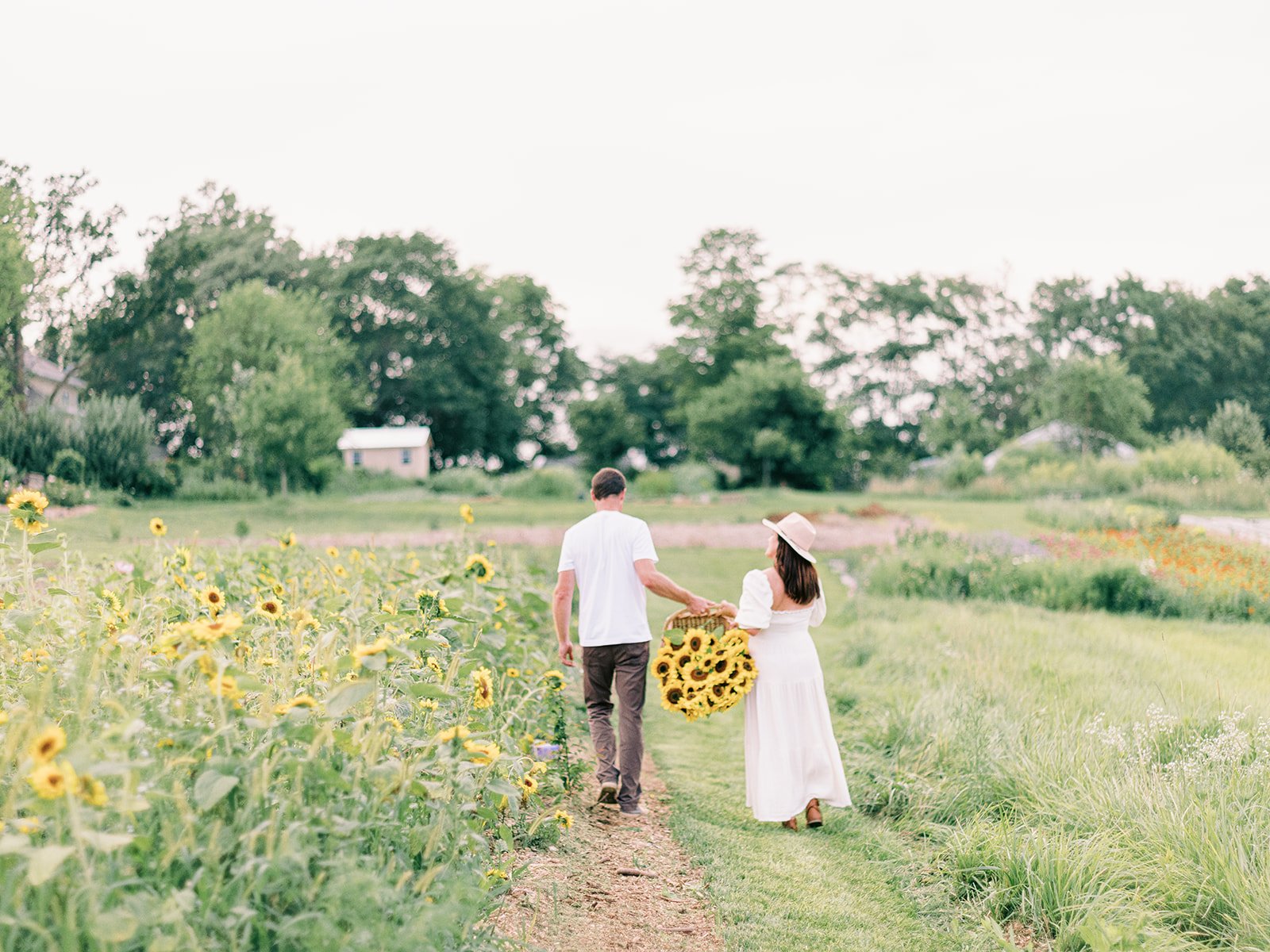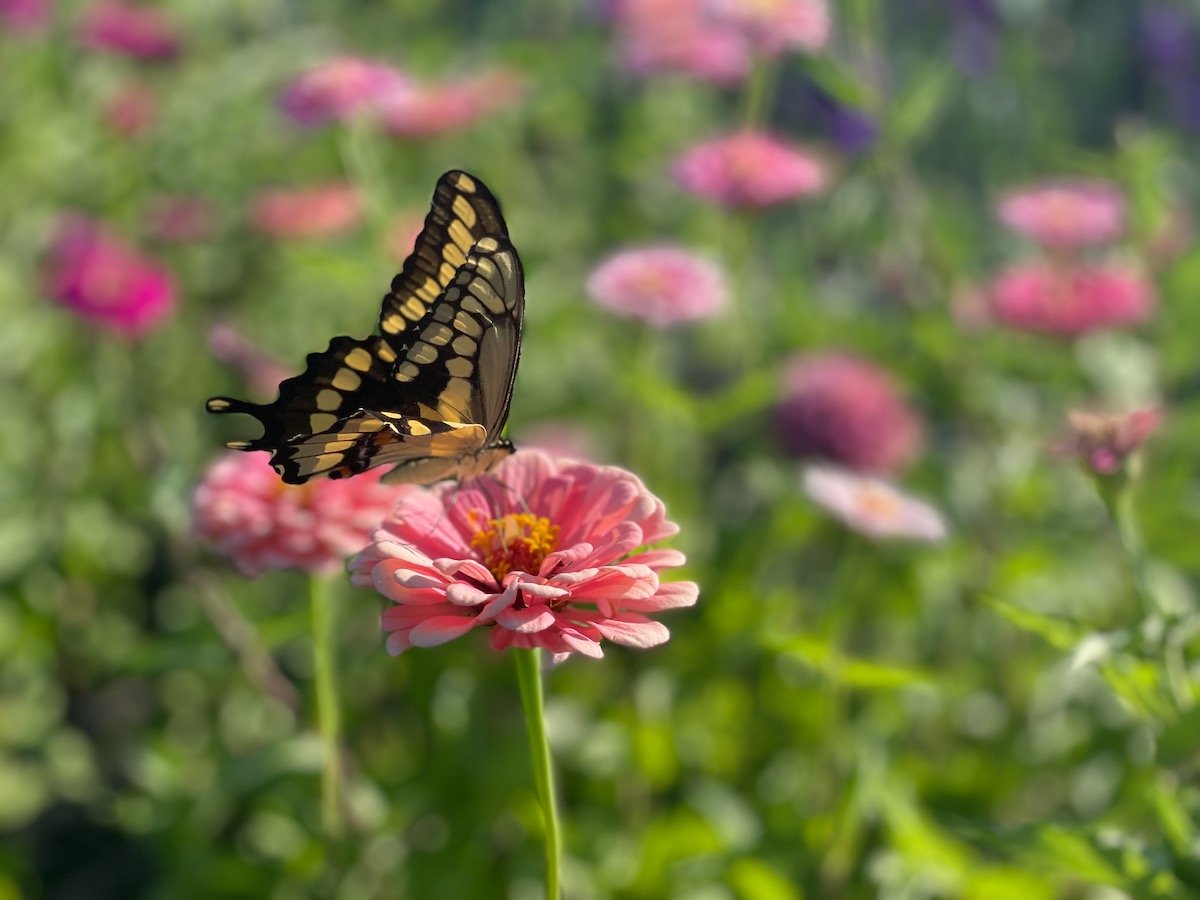
Creating a Gorgeous Raised Bed Garden
Explore the simplicity and beauty of raised bed gardens with our guide. Perfect for any gardener, these beds offer controlled environments and easy maintenance. Learn the benefits, design tips, and step-by-step instructions to create your flourishing garden. Elevate your outdoor space with joy and ease. Happy growing!
If you're looking to add a touch of beauty and functionality to your outdoor space, raised beds could be the perfect solution. Whether you're limited on space or just starting out on your flower-growing journey, raised beds offer a fantastic way to cultivate a thriving garden right at your doorstep. At PepperHarrow, we've embraced raised beds as a key part of our dahlia breeding efforts, and as an integral space for relaxing and entertaining. Today, we're going to guide you through the process of creating your very own raised bed garden.
Why Raised Beds? Raised beds offer a range of benefits and hey, let’s not overlook their beauty, making them an excellent choice for both beginners and seasoned gardeners. They're particularly useful when your soil isn't ideal for flower growth, providing you with a controlled and enriched growing environment. Additionally, these beds are easier to maintain compared to open-field plantings. Weeding and tending to your plants become less of a chore, and watering is more convenient since raised beds are often closer to water sources. Keep in mind that raised beds require more frequent watering than plants in the ground.
Designing Your Garden
Before you roll up your sleeves to get to work, take the time to draw out and design your raised bed garden. Sketch out a plan on paper to plan out a space that works for you, allocating enough space between each bed to allow for 3-foot-wide paths. Staking out the corners of your garden area with wood and tying strings between the stakes can help you frame the space accurately and ensure its level.
Here are the Materials Required for the Beds We Created for our Eight 4-by-8-foot raised beds in a 30-by-40-foot area, gather the following materials for each raised bed:
(3) 2-x-12-x-8 treated lumber
(1) 4-x-4-x-4-inch treated lumber
(4) 6-x-6-inch steel corner braces
Additional Supplies:
200 feet of 6-foot or wider landscape fabric for weed barrier
100 Landscape pins to secure the fabric
160 3-inch exterior screws
48 2-cubic-foot bags of wood chips
160 1-cubic-foot bags of topsoil
500 pounds of chipped limestone road stone
Drip irrigation or overhead watering apparatus
Optional decorative arches for growing vines
Seeds of your choice!
Step-by-Step Guide for Building a Raised Garden:
Step One: Preparing the Ground
Draw your raised bed plan on paper, considering the layout and spacing.
Stake each corner of your designated area using wood and tie strings between the stakes to outline your space and ensure it's level.
Lay down landscape fabric as a weed barrier.
Step Two: Creating the Base
Spread gravel evenly across the entire area using a landscaping rake.
Prepare the lumber, using 8-foot boards for the sides and cutting an 8-foot board in half to form two 4-foot ends.
Step Three: Assembling the Bed
Use your drill and screws to secure the lumber at the corners, utilizing the 4-x-4-inch lumber as braces.
Step Four: Adding Growing Medium
Lay six bags of wood chips in the bottom half of each raised bed, smoothing them out with the landscaping rake.
Finish by adding 20 bags of topsoil to fill the beds to the top. Keep in mind that the soil will settle over time, so you may need to add more before planting.
Sparkle Details =Dream Space
The last step is to add pieces that make your raised bed garden sparkle. Items like arches for growing vines, bistro lights, table and chairs are great things to add to really make the space inviting. All of this you can use for hosting guests, or for your own personal enjoyment.
By following these steps and using the materials mentioned above, you'll be well on your way to creating a beautiful and functional raised bed garden, just like the ones at our flower farm! As you tend to your flowers and watch them thrive, you'll appreciate the benefits of raised beds, from improved growing conditions to easier maintenance.
Whether you're an aspiring gardener, dahlia breeder or simply passionate about cultivating a beautiful flower garden, raised beds provide an excellent foundation for your gardening endeavors.
Happy growing!
XX Jenn and Adam
Spring Planning for the Flower Garden
Spring into action with our essential tips for a blooming flower garden! From choosing the right plants to easy-to-grow flowers, soil preparation, and smart watering, we've got you covered. Learn the art of deadheading, protect your garden from pests, and make the most of the spring sunshine. Follow these tips for a beautiful and thriving flower garden that will be the envy of your neighborhood. For more inspiration, check out our guest features on MarthaStewart.com and join us on Instagram and Facebook @pepperharrow_. Happy gardening!
Spring is the perfect time to start thinking about your flower garden. Whether you're an experienced gardener or just starting out, there are a few tips and tricks that can help ensure a successful, beautiful display, full of blooms all growing season long. Here are some spring flower garden tips to help you get started with a beautiful flower garden:
Choose the Right Plants: When selecting plants for your garden, it's important to choose ones that are well-suited for your climate and soil type. You can consult with your local nursery or gardening center for recommendations on plants that thrive in your area. Check out our flower, shrub, tree, and ground cover suggestions for each growing zone in our guest contribution for MarthaStewart.com. You can access it here!
Choose Easy to Grow Flowers: We love growing easy to grow flowers, because they give us high impact color and blooms for very little effort. These are also great to look at when you first start a grade, because they’ll help you to build confidence as you grow! Here’s some great ideas via our guest feature in MarthaStewart.com for 12 Easy Annuals for Beginner Gardeners.
Prepare the Soil: Before planting, make sure to prepare the soil by adding compost or other organic matter to improve its texture and nutrient content. This will help your plants grow strong and healthy.
Water Wisely: It's important to water your plants regularly, but be careful not to overwater them. Too much water can lead to root rot and other issues. Check the soil moisture regularly and water as needed.
Provide Enough Sunlight: Most flowering plants require plenty of sunlight to thrive. Make sure to choose a spot in your garden that gets plenty of sunlight throughout the day. We recommend at least 6 hours of sun each day for a plant that requires full sun, part sun or also shade. For shade plants, they just really don’t like a lot of intense sun, dappled is best!
Deadhead Regularly: To encourage your plants to produce more blooms, it's important to deadhead them regularly. This involves removing spent flowers from the plant to promote new growth.
Protect from Pests: Unfortunately, pests and insects can be a problem in any garden. To protect your plants, consider using natural remedies like neem oil or companion planting with herbs like basil and mint, which can repel pests.
We hope these tips help you create a beautiful and thriving spring flower garden! If you need more flower garden inspiration, follow along with us on Instagram via pepperharrow_ or on Facebook: PepperHarrow. And let us know if you have any questions, by commenting below!
XX Jenn and Adam







